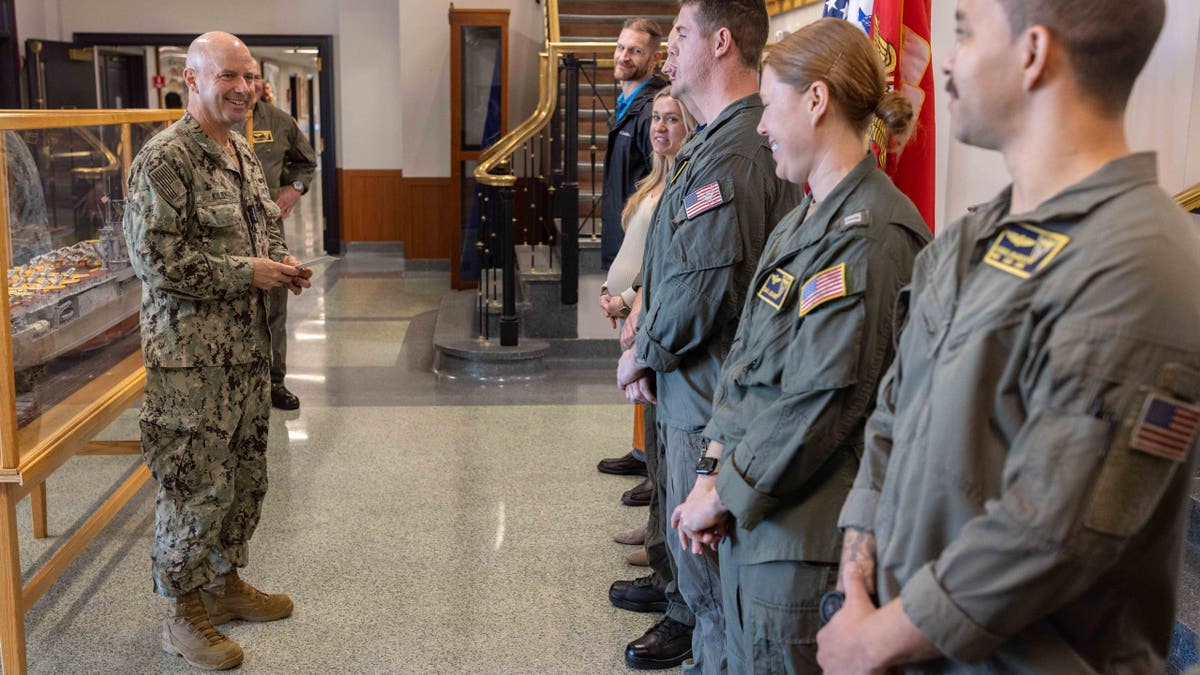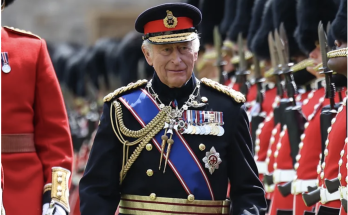Veterans call on Trump, Hegseth to order military to fix false arrest records
Soldiers given false arrest records have been stuck in bureaucratic limbo for years. President Trump or Defense Secretary Hegseth could fix it, lawyers say.
New acting Chief of Naval Operations (CNO) Adm. James Kilby said he regrets the Navy’s reliance on expensive, high-powered missile interceptors to counter the Houthi threat in the Red Sea and pledged to push for cheaper, more efficient solutions.
Speaking to reporters at the Sea Air Space conference in National Harbor, Maryland, Kilby said he was “not concerned” about the Navy’s ability to protect its people – such as the 350 sailors aboard the USS Carney missile destroyer – or its ability to safeguard commercial shipping.
He is concerned, however, about “not having better ways to more economically attrit the threat.”
In his former role as deputy commander of Fleet Forces Command, Kilby said he was “focused on a high-end laser – 500kW to one megawatt – and I have regret for that.”
TRUMP ADMIN FIRES NAVY ADMIRAL AT NATO TARGETED BY CONSERVATIVE GROUP

Newly recruited Houthi fighters attend a protest march against the U.S.-led strikes on Yemen that have ebbed and flowed since Oct. 7, 2023. (AP/Osamah Abdulrahman)
“I had not been thoughtful enough to think about the UAV threat, where I think a much lesser-powered weapon would have done what we needed it to do,” Kilby said.
He promised the Navy was now working to overhaul its costly defense tactics with “much more cost-effective” technologies to counter autonomous vehicles in the Red Sea, as he called on the defense industry to more quickly produce munitions for the mission.
“We have to get after our industrial base or munitions industrial base the same way we have to get after our shipbuilding industrial base,” said Kilby.
When asked if the Navy had enough munitions to counter the Houthi threat, Kilby replied, “I think we need more munitions.”
“We certainly need more depth of magazine, if we’re going to get into a protracted conflict.”

Adm. Jim Kilby, left, visits Pensacola, Florida, in January, just before he was named acting chief of naval operations. (United States Navy photo by Mass Communication Specialist 1st Class Zachary Melvin)
The U.S. launched a renewed offensive campaign against Yemen’s Houthi rebels last month, and Defense Secretary Pete Hegseth said Monday, “it’s about to get worse” for the Houthis.
Onlookers have long decried the disproportionate cost of taking on the Yemeni rebels. Naval missiles that run around $2 million a shot have been used to take out drones that cost the Houthis no more than $2,000. Since the March 15 offensive began, the Houthis have also downed three MQ-9 Reaper drones — each worth about $30 million.
Kilby replaced Adm. Lisa Franchetti in an acting capacity in February, after she was let go as part of a broader purge of high-level military leadership by the Trump administration. Former Joint Chiefs Chairman Gen. C.Q. Brown and Air Force Vice Chief of Staff Gen. James Slife were also relieved of command.
It is not yet clear whether Kilby will be nominated to serve as CNO in a permanent capacity and put forward for Senate confirmation.
However, Kilby said he would continue Franchetti’s goal of getting the Navy to a point where 80% of its ships are ready to deploy for combat at any given moment. Currently, he said, submarines are operating at 67% combat readiness, ships are at 68% and aircraft carriers are at 70%.
Kilby told Fox News Digital he was pleased that “awareness seems to be higher” regarding the nation’s shipbuilding issues, adding, “it’s going to take a national effort.”
He also said he was “super focused” with the Marine Corps commandant and deputy commandant on getting the Medium Landing Ship (LSM) program back on track. 
HOUTHIS SHOOT DOWN 3RD US REAPER DRONE AS TRUMP ADMINISTRATION CONTINUES DAILY AIRSTRIKES

Central Command releases an image of a ship firing at Houthis last month. (U.S. Central Command/Handout via Reuters)
The LSM program, viewed by many as crucial to moving Marines around remote islands in the Indo-Pacific in the event of conflict with China, has been plagued by delays, with work on the program stalling late last year.
The vessel is envisioned to be able to transport forces right onto a beach without any port access, where they would be able to fire anti-ship cruise missiles and collect intelligence.
Kilby said Navy and Marine Corps leadership are now looking to get approval to procure a ship to enter the testing phase of such a vessel.
“We’re going to go through we’ll look at those requirements, make sure we produce a ship that can meet the needs of the Marine Corps and support their force design. But I’m thankful we’re doing it now not when our ship’s in construction. So I’m optimistic here. And we need that. You know, we need to have this expedition.”
Kilby also laid out his goals for sailor recruitment shortfalls. “I’ll take that 23,000-person gap, make it 18,000 this year and 8,000 the next year.”


